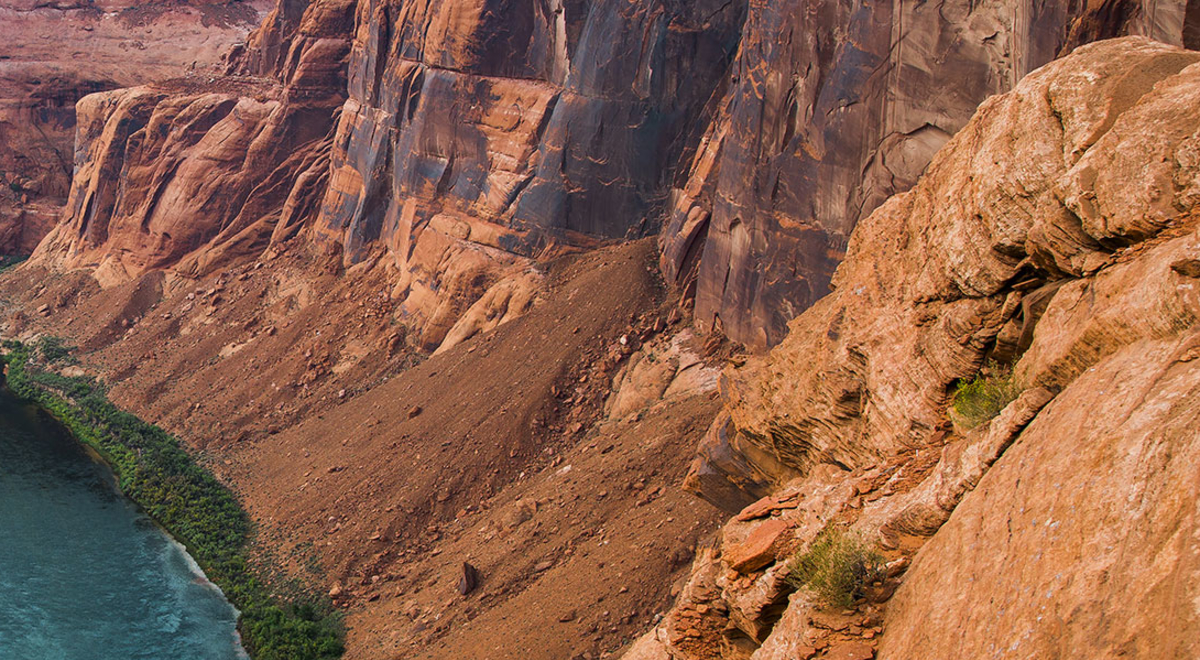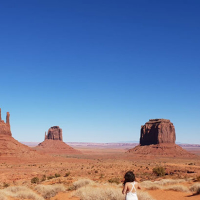A US road trip should be on everyone’s to-do list. Not just for the views and the scenery, but also for the off-grid experience. You don’t realise how vast and beautiful it really is until you’re stuck in a car for four hours in the middle of the desert in 40-degree heat with nothing but open space surrounding you.
It seems that everyone is doing the same route – route 66 anyone? – and the same activities, so why not try something different? Something like kayaking the Colorado River. It’s thrilling, scary and completely liberating. While on a road trip from Las Vegas to Utah, Arizona and California, stopping at dream locations such as Joshua Tree, Horseshoe Bend and Monument Valley, my boyfriend and I decided to add in kayaking down the Colorado River. Disclosure: this is not something that should be taken lightly, as we had first thought.



Camping in Utah - Image: Louise Squire
Where to Start
Planning this adventure, as fun as it is, requires a reasonable amount of pre-planning. It requires you to pre-book the kayaks, life jackets and other equipment well in advance, as well as booking your ‘taxi’ (or backhaul service) up the river from the port in Lees Ferry, right to the start of the river by Glen Canyon Dam. These companies can easily be found online as Page is known for its water activities thanks to the beautiful Lake Powell.
The morning of our kayaking trip, we drove straight from Monument Valley to Page to see Horseshoe Bend, and then picked up our kayaks and equipment. The kayak trip was not immediately off to the best start; we were left with an employee who had seemingly no idea about the equipment and how to set it up, so after 40 minutes of back and forth and hoping that everything worked and we wouldn’t drown, we were filled with a sense of regret and even considered backing out. But the sense of accomplishment we would get from doing the trip meant we continued on, so it was off to the dock through Marble Canyon.
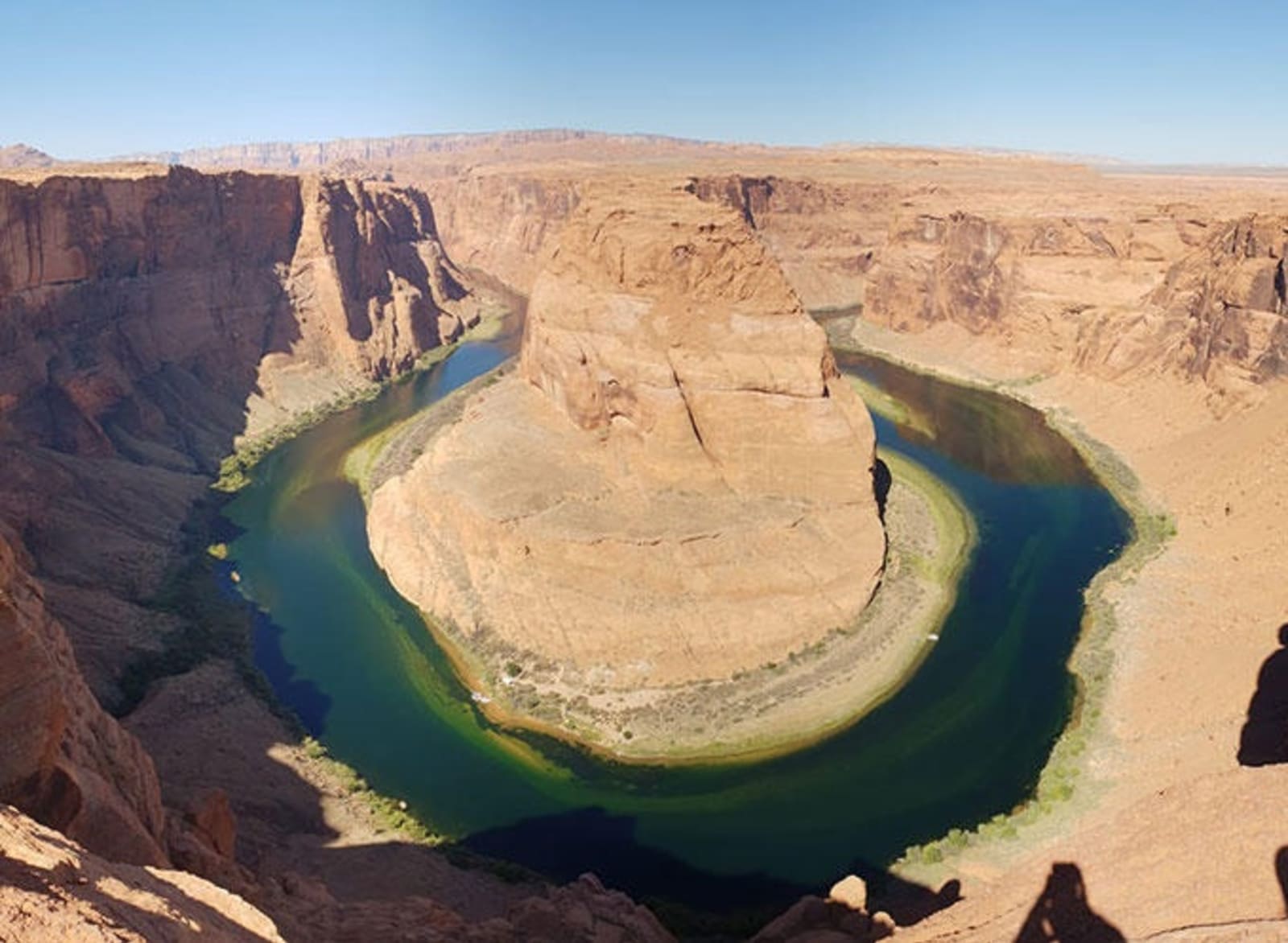


Horseshoe Bend - Image: Louise Squire
Heading Out
We arranged to leave from Lees Ferry – a well-known filming location as seen in Into The Wild, and the only place in hundreds of miles you can easily access the Colorado River from both sides. We were lucky to have our backhaul driver explain how to use our equipment and talk us through the process, as apparently this was a great activity for locals and tourists alike. After about a 45-minute boat trip upstream to the dam, we were dropped off on one of the banks overshadowed by the vast Glen Canyon Dam (while used for droughts, Glen Canyon Powerplant produces around five billion kilowatt-hours of hydroelectric power annually, which is distributed to Wyoming, Utah, Colorado, New Mexico, Arizona, Nevada, and Nebraska).
We cautiously unloaded our kayaks and camping equipment, and hoped that with our novice kayaking skills, our belongings would stay strapped onto the front and back of both of our kayaks. We jumped in (life jackets strapped on for dear life) and slowly floated downstream. As we started paddling down the river, we slowly came to realise how bendy, wide and long the river really was and worst of all, how isolated it could be. Admittedly it felt a little daunting; we passed one person on the journey to the starting point of our trip, and that was the only person we saw for two hours after we started. The water was freezing, the depth varied throughout and where different currents collided, it created a whirlpool-like suction, drifting our kayaks from side to side. I’m told we chose the easy route, as experienced kayakers go against the stream to end at the dam, camp overnight and then ‘easily’ float back the next morning.
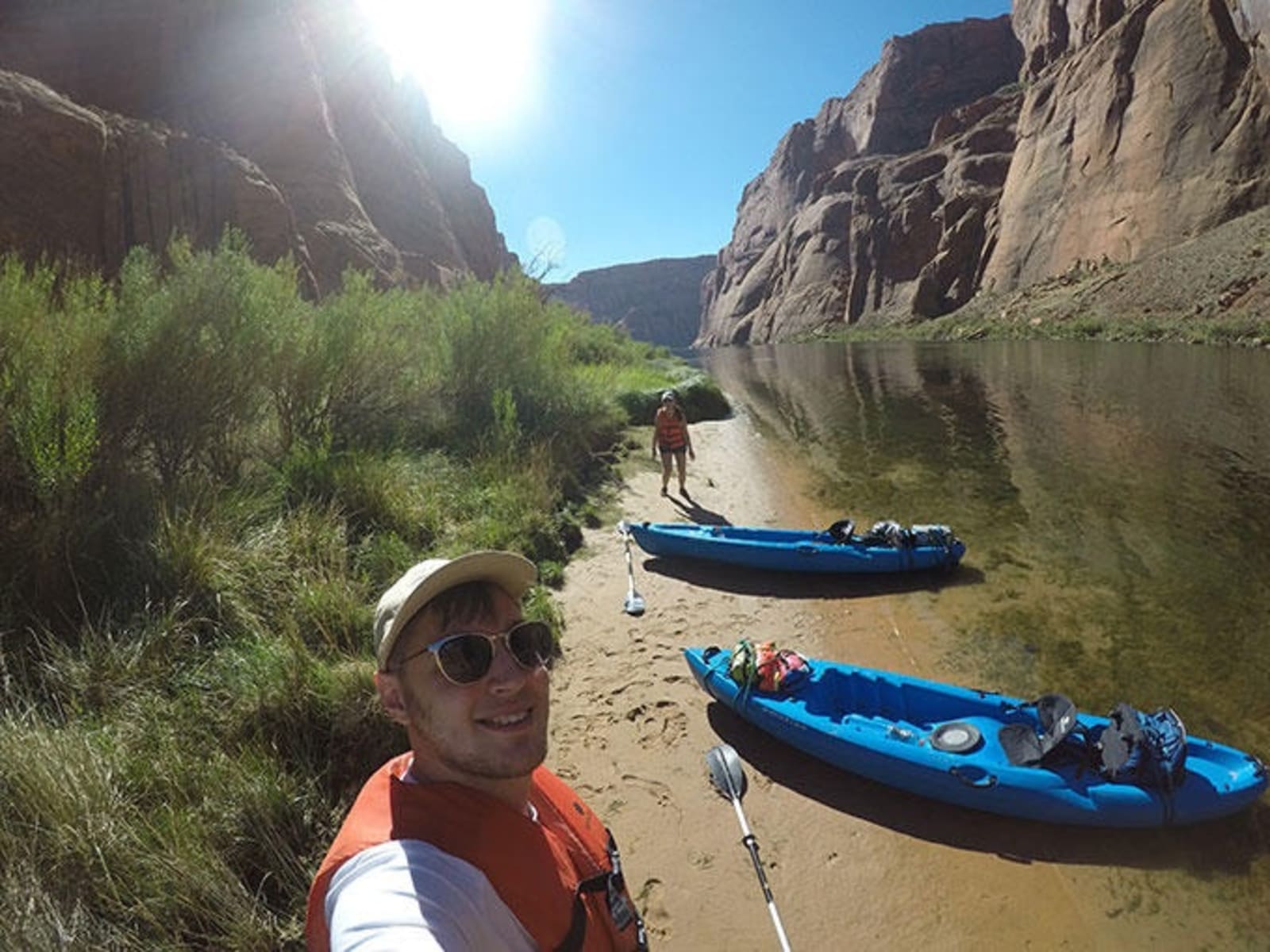


Kayaking on the Colorado River - Image: Louise Squire
Once we put our fear to one side though, we relaxed and started to soak up the incredible experience. No phones, no signal and only open space and rocky mountains for miles beyond. As the sun started to set, we had no option but to set up our tent on Ropes Trail campsite three hours in.
Just before we had pulled up, an otter swam across in front of us and it was unbelievably beautiful to see an animal in the wild in its natural habitat. Luckily for us another guy had set up camp and was there fishing. He gave us a couple of beers which instantly helped us relax – top tip: bring plenty of drinks and snacks, this isn’t an easy trip and often you are completely alone with no resources! Our new friend was spending seven days camping at different points along the river and hadn’t seen anyone in two days. Travelling north from Tuscon, Arizona, he wanted a place to relax with no pollution or distractions. And you could see why. After the sun set, you could see the Milky Way, crystal-clear in the sky. Magical.
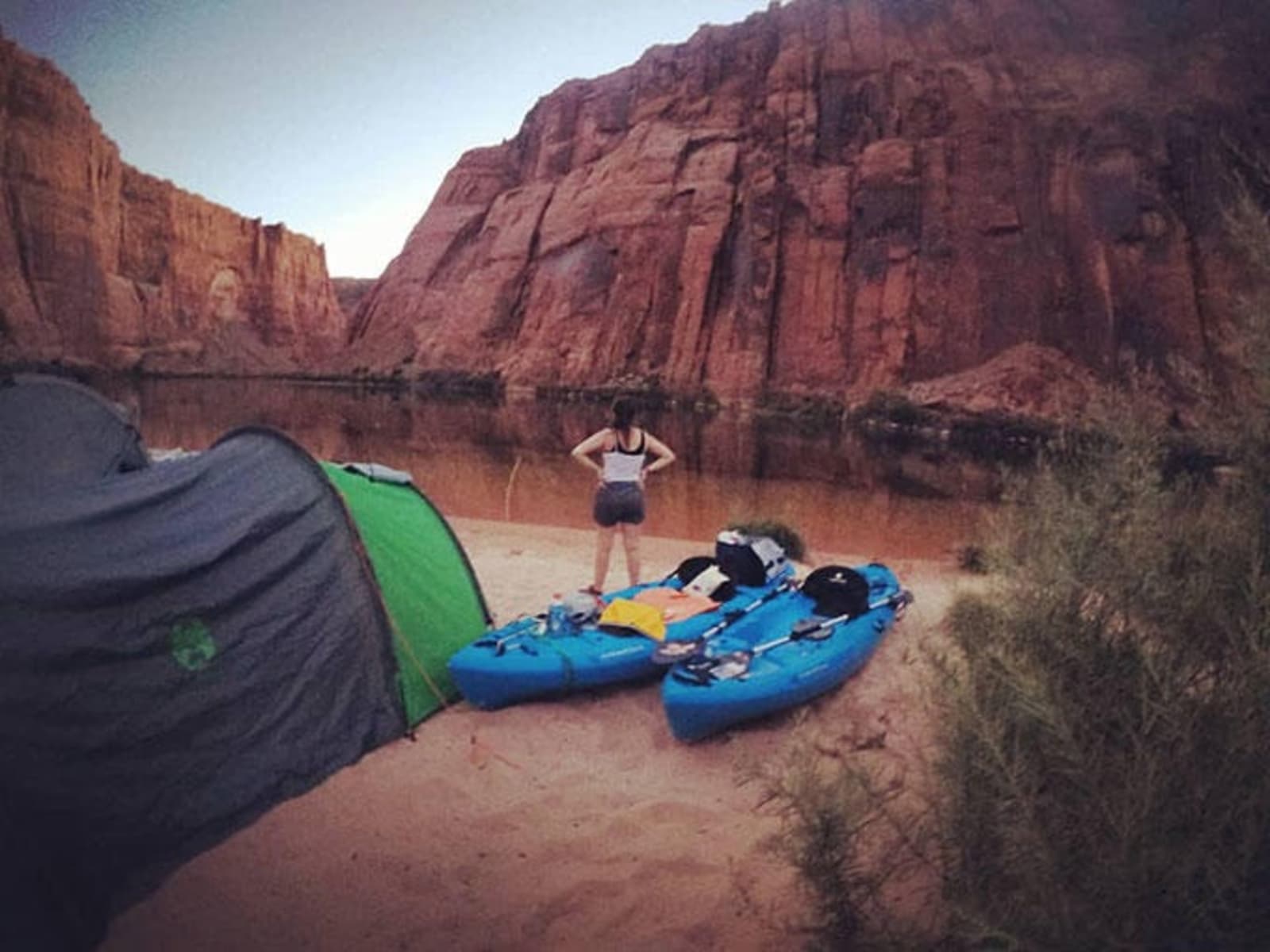


Camping Riverside - Image: Louise Squire
The Last Hurdle
After a terrible night of sleep – it was freezing cold and there were plenty of wild animals making noise, hello! – we set off early hoping it would be a fast trip back. After looking at the map, we realised we were only 1.5 miles in. The entire journey would in fact be 15.6 miles, so we mentally prepared ourselves for what was going to be an extremely long day.
Once the fatigue set in and the temperature rose, we realised the full extent of this activity. It was exhausting and challenging, no doubt about it, but the beauty of the canyon is what made the float back worth it. Its red sandstone walls rise up to 1,800-foot and from the kayak, you can witness the ancient Anasazi rock. When we finally made it to Horseshoe Bend, we knew we’d made the halfway mark. Looking up, we spotted everyone taking selfies, precariously hovering over the ledges, just to get that all-important Insta shot. It took 45 minutes to fully make it around Horseshoe Bend alone. Even though it looks big in pictures, it’s very difficult to appreciate the true size of it until you’re kayaking around it.
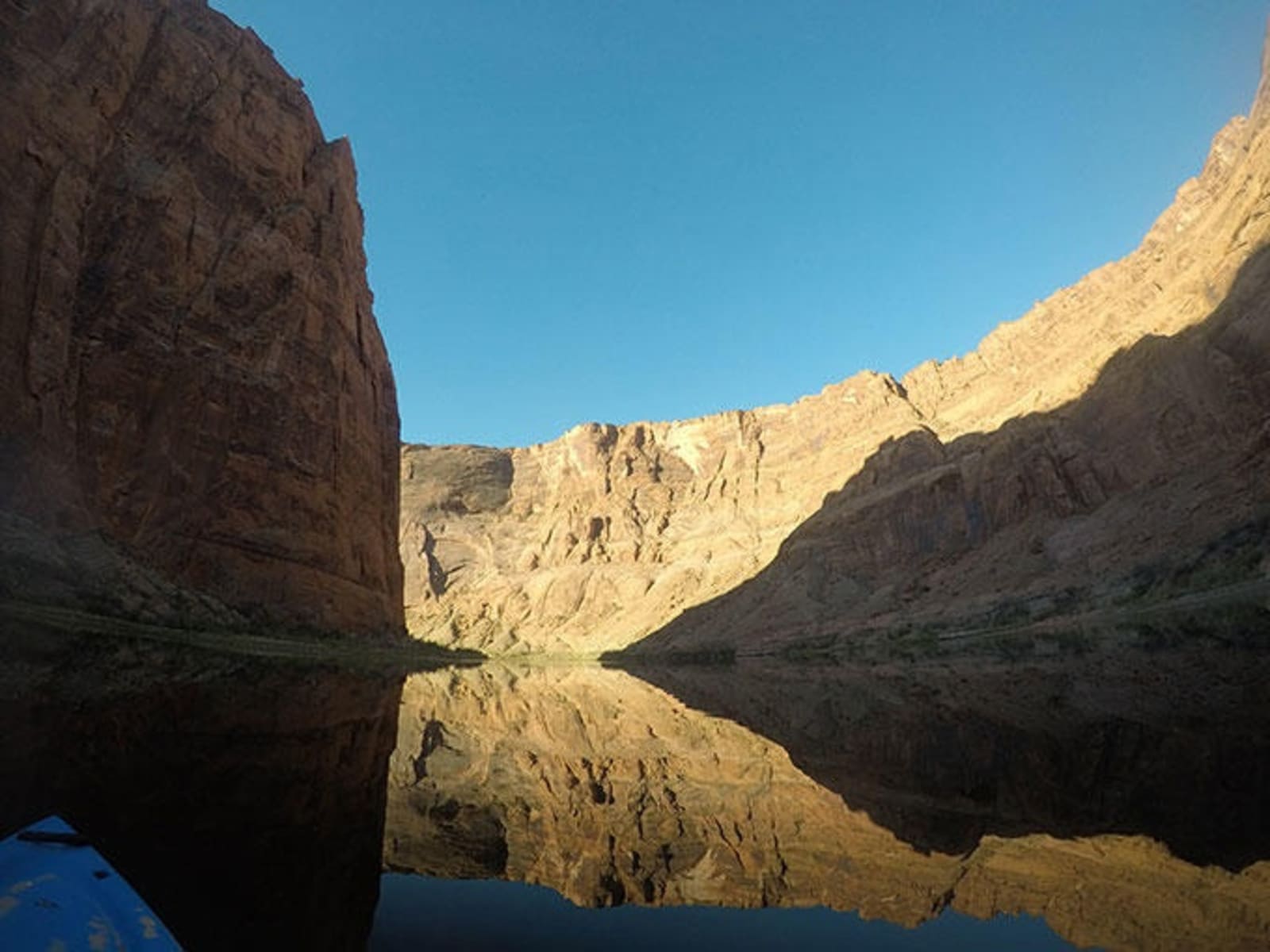


Colorado River - Image: Louise Squire
The hours seemed to blur into days in our minds. There were hilarious moments of thinking our kayaks were filling up with water. We even pulled up on various bits of land hoping to stay there until someone would offer us a lift back. To make matters worse, my boyfriend’s feet were so badly sunburnt he could hardly stand. You don’t realise how strenuous kayaking is until you’re four hours in, haven’t passed a single human on the river and don’t know how far you are till the end. Passing the wild horses on the river banks, the river started to widen, the wind grew faster and the currents were stronger, making every push harder. Finally seven hours in, we had made it. The dock was in sight. In that moment, we were truly relieved.
Despite the time and effort, this kayaking trip was genuinely the best adventure. It makes for a great story and to say we kayaked around Horseshoe Bend is a privilege that not everyone can say they’ve had. What a fantastic experience

